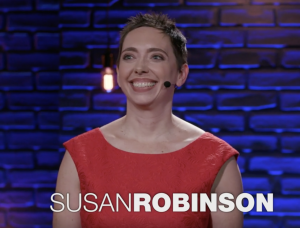When the topic of disability is brought up, we tend to imagine a certain kind of person. We never think of the multitude of people who might not align with the typical idea of disabled. What is the ‘typical‘ idea of disabled, and what does it mean to only imagine disability in this way?
With the emergence of disability life narratives, the popular marketplace of memoirs has been introduced to different kinds of disability; not one that is new, but one that has not been paid attention to. Under this newly introduced umbrella, the not so ideally disabled person might be found. With authors, entrepreneurs, creators, and other professionals who are given the label “disabled”, audiences of traditional disability memoirs are encouraged to consider other types of disability and disabled people, and why they might not have as much room in the marketplace.
Influential people such as Susan Robinson and Jason Da Silva, and authors studied throughout ASTU 100 such as Couser and Schaffer & Smith, we are encouraged to question why there is a certain type of disabled person whose story is more successful.
In Susan Robinson’s insightful and entertaining TedTalk, she explains how she fails at being disabled, in the views of others, and how this strikes her as particularly funny.
She introduces this idea that many people, including herself, “…hate the word disabled when it’s used to describe people” (Robinson). Yet at the same time, she feels entitled to it. This can be seen as how she and others have, in Couser’s words “…a high degree of control over their own images.” (Cousrer, 31). In essence, Susan Robinson explains how she is taking back the term “disabled” and redefining it in her own terms, and encourages others to do the same.
The “five tips to fail at being disabled” that Robinson introduces forces audiences to recognize that there might be an ideal disabled person that is more appealing in the marketplace, and to consider why this might be (Robinson). In her first tip, she tells the audience to know their superpowers. She explains how through being partially sighted, she discovered where her talents were and put them to use in her career. She explains how through relying on her best strengths, her and her colleagues “…achieved tremendous outcomes.” (Robinson). This example is reflective of Couser’s ideas that authors of stories of disability “…represent their former condition as grotesque…” (Couser, 34).
Presenting her strengths and disability as a positive thing allowed her to find and appreciation of her disability. By doing this, and by encouraging audiences of disability narratives to do this, she is changing the narrative from others feeling pity for those who are disabled to allowing them to take their disability under their own definitions and representation.
Works Cited
“Rhetoric and Self-Representation in Disability Memoir.” Signifying Bodies: Disability in Contemporary Life Writing, by G. T. Couser, University of Michigan Press, 2010, pp. 31–41.
Robinson, Susan. How I Fail at Being Disabled. TED: Ideas Worth Spreading, Dec. 2016, www.ted.com/talks/susan_robinson_how_i_fail_at_being_disabled?utm_campaign=tedspread-a&utm_medium=referral&utm_source=tedcomshare#t-156218.
